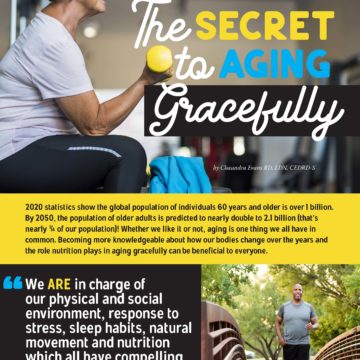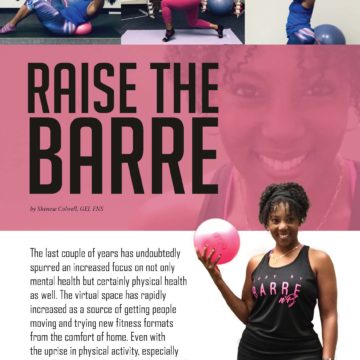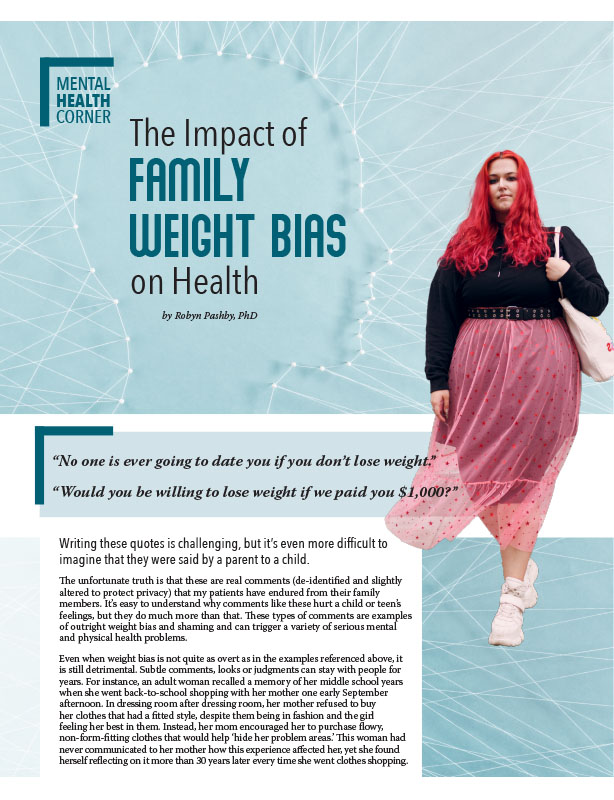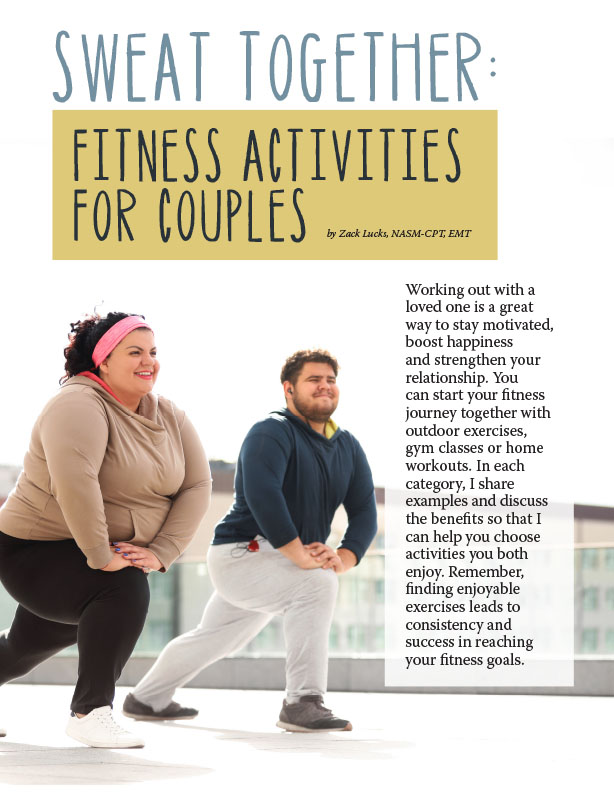Walk It Off

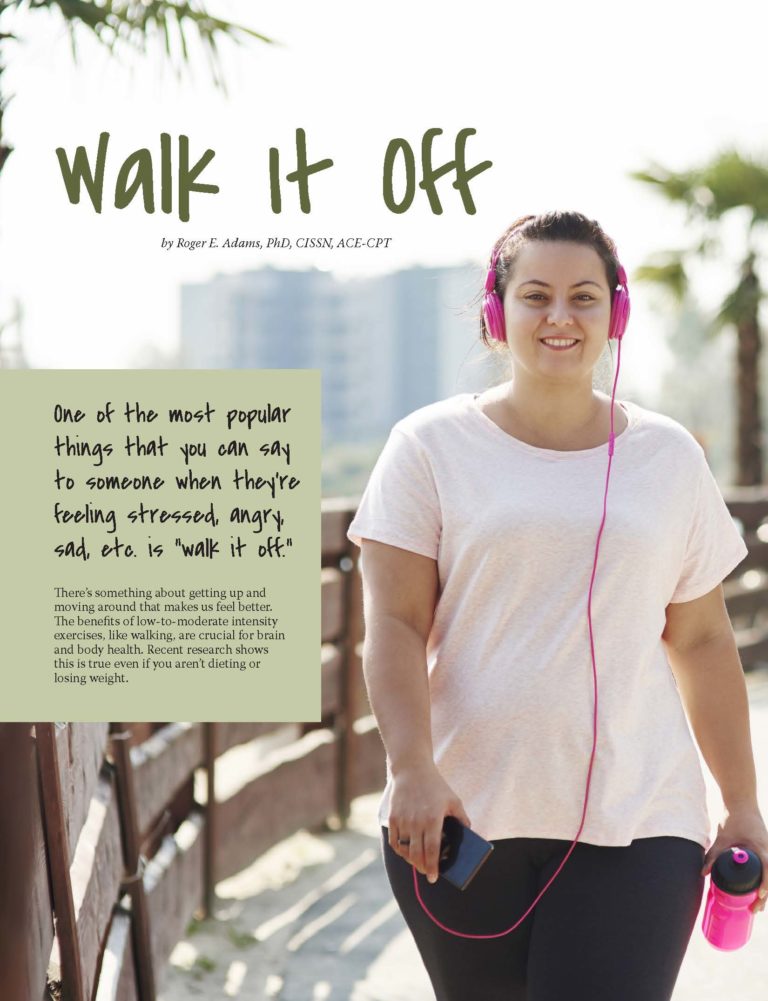
by Roger E. Adams, PhD, CISSN, ACE-CPT
Summer 2022
One of the most popular things that you can say to someone when they’re feeling stressed, angry, sad, etc. is “walk it off.”
There’s something about getting up and moving around that makes us feel better. The benefits of low-to-moderate intensity exercises, like walking, are crucial for brain and body health. Recent research shows this is true even if you aren’t dieting or losing weight.
Improving Your Health
When examining the relationships between fitness, weight, heart health and longevity, researchers analyzed the results of hundreds of studies involving weight-loss and exercise. Researchers found that low-intensity exercise reduced the risk of heart disease and premature death in people with obesity far more than weight-loss or dieting. They also found that exercise affects fat cell behavior and may improve insulin resistance — reducing the risk of diabetes and possible weight gain.
Regardless of your weight, improving your fitness level improves your health, even if noticeable weight-loss does not occur.
Walking is Good Enough
Exercise doesn’t need to be difficult, long, or high intensity to show benefits. We now know “walking it off” will help improve physical health, but how many steps are needed for the health benefit?
For years, guidance on the number of steps we should take each day to be healthy was not based on scientific research. More than 30 years ago, a Japanese marketing campaign “Manpo-kei,” promoted walking 10,000 steps per day (See related on the right). At the time, 10,000 steps were a good guess and an easy number to remember, but today we know that any activity is better than none.
In 2010, American researchers found a 10% reduction in the occurrence of metabolic syndrome (a collection of conditions that increase your risk of diabetes, heart disease and stroke) for each additional 1,000-step increase in daily movement.
This year researchers showed decreases in mortality among people 60+ when their daily steps reached 6,000-8,000 but showed no additional benefit at greater amounts. For those younger than 60, research determined a daily step count of 8,000-10,000 was correlated with the best health outcomes. What we know is that moving more helps improves health, but there is a limit to the benefits — especially as we age. So, if living longer is your goal, this study suggests you can reap benefits from 7,500 steps a day.
Manpo-Kei
When Japan was preparing to host the 1964 Tokyo Olympics, there was an increased focus on fitness in the general Japanese population. An awareness had begun to spread about the fact that regular exercise was a good way to fight against lifestyle diseases such as hypertension, diabetes, and strokes. It was also the best way to fight obesity, which was fast becoming an epidemic. The simplest exercise was walking – anyone could do it, no special equipment was needed, and no coaching or training was required.
The modern pedometer was introduced to the Japanese marketplace at roughly the same time. It was a simple gadget that could be worn around the waist and would calculate the number of steps walked. This gave an individual a good idea of the distance they managed to cover. This was fortuitous for the health-conscious public who wanted to stay fit and use walking or jogging as their primary exercise tool. Needless to say, the gadget sold quickly as people began keeping track of just how many steps they were walking each day.
Manpo-kei, which literally means 10,000 steps in the Japanese language, became the rallying slogan for these dedicated walkers. Many Japanese walking clubs swung into existence and Manpo-kei was the minimum that they were expected to walk. Gradually the concept of walking 10,000 steps moved from the Japanese public to health-conscious walkers around the world. Today most fitness experts will use Manpo-kei as the basic fitness goal for a regular exercise regimen.
Best Time to Walk?
I get this question from clients weekly, and the best time to exercise, including walking, is when you are most likely to do it. If exercise becomes an additional burden on your schedule, there’s a good chance you won’t make time for it.
If you’re not already walking, start small and increase your activity during the day doing your normal activities. You may be able to add several thousand steps without adding time to “work out!”
Some tips for sneaking extra steps into your daily activities:
- Take the stairs instead of the elevator, especially if you’re only going a few floors
- Park at the first empty space as far away from the entrance as you can
- Get off the bus or subway one or two stops earlier than your destination
- Spend half of your lunch break walking outside or in your building or home
- Use streaming services to your advantage… pause your show and walk around the house every 10 min. while you’re watching TV
- Walk to a nearby café or restaurant rather than drive
- Take your fur babies for an extra walk after dinner
Conclusion
When we change the requirement for better health to increasing our activity instead of solely focusing on losing weight or dieting, we impact our health quicker and make more long-lasting lifestyle changes. Anyone can have better health at any weight if they listen to the sage advice and “walk it off!”
About the Author:
Roger E. Adams, PhD, CISSN, ACE-CPT, is the owner of eatrightfitness, an evidence-based private practice focusing on weight management, sports performance nutrition and wellness coaching, located in Oklahoma City. He has more than 23 years of experience working with clients in person and remotely to achieve better health and fitness. Additionally, Dr. Adams speaks at business seminars, health fairs, and nonprofit organizations about the ever-changing field of nutrition and fitness. Dr. Adams holds a doctorate in nutrition from Texas Woman’s University and is a certified personal fitness trainer by the American Council on Exercise (ACE). He is also a certified sports nutritionist by the International Society of Sports Nutrition (ISSN), as well as an active member in the Obesity Action Coalition; The Obesity Society; the Sports, Cardiovascular, and Wellness Nutrition; Nutrition Entrepreneurs; and the weight management dietetic practice groups of the Academy of Nutrition and Dietetics. Recently, Dr. Adams became a Master Instructor with the ISSN and teaches internationally to educate health professionals on the importance of diet and exercise. More information about Dr. Adams is available at EatRightFitness.com.
by Yelena Kibasova Spring 2024 The fitness world is evolving, with new trends and innovations that promise…
Read Articleby Robyn Pashby, PhD Winter 2024 “No one is ever going to date you if you don’t…
Read Articleby Zack Lucks, NASM-CPT, EMT Winter 2024 Working out with a loved one is a great way…
Read Article




